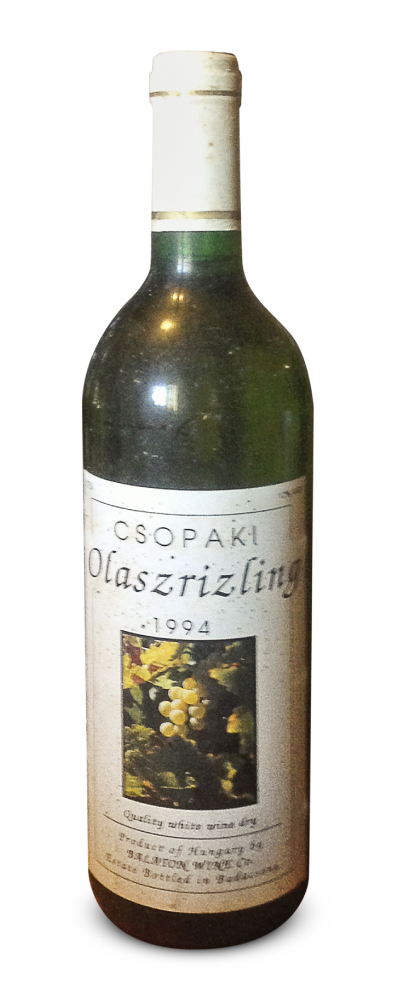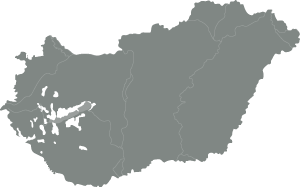Personal opinion:
After Socialism ended, and after the change of the system, state farms were replaced by corporations and private businesses. You can discover the remaining bottles of outstanding quality from these companies. Corporations used the sites, machines and plantations of Socialist co-ops. The cultivation of plantations that were privatized started at this time. However, they could not produce great results, initially. Bottling wines was already possible for new small wineries but only the bigger companies were able to produce sufficient quantities for export. These wines were bottled with the aim of exporting them. As far as I know these made it to the Vatican, the White House in Washington D.C. and the Kremlin in Moscow, etc.
Information:
We do not re-bottle or re-label the Museum wines - we offer them in their original bottles with the original content and original label. The product picture shows the bottle that remained in the best condition for the sake of recognizability. The product inventory shows the number of bottles that remained intact. Unfortunately, not all the labels are undamaged! Therefore it may happen that the label is damaged (torn, worn or mouldy).
About the Olaszrizling or “Italian Riesling” variety:
Olaszrizling is a variety of Italian or French origin belonging to the wine-producing variety (Vitis vinifera) of the family Vitaceae, and it is one of the most common white wine grapes in Hungary. It arrived to Hungary from France from the middle of the 19th century. In place of those vines destroyed in the big phylloxera epidemic, new ones were planted. At its best production sites on the Szent György Hill and Csopak its yields are already much better than in its original homeland.
Its stock is medium or weak, its canes are bushy and thin. Its cluster is small to medium-sized, packed, cylindrical and often has a side cluster. Its berries are small, yellow, round, barely velveted, and thin-skinned. Its flesh is soft, juicy, and neutral in taste. The taste of its wine often resembles that of bitter almond. It has a slight reseda aroma, its acids are gentle but their quantity depends on the production site. In northern Transdanubia, for example, the acids are the most gentle in Csopak, with the acidic character strengthening towards Badacsony and Balatonederics, and the strongest on the Somló. Within one site it is more acidic on the northern parts of the hills and more gentle on the southern parts.
It can be harvested in the first half of October. It ripens late therefore it favours warmer spots, southern hills. Its yield is abundant, and it is a variety of excellent quality. Its harvest is of almost constant quality but it is sometimes affected by rotting and vine-mildew. Its overripe grapes are used to make special quality wines.
Its unique characteristic is its great demand for magnesium; without that it may have deficiency diseases. A significant part of the magnesium gets into the fruit and from there into the wine so its wine is curative for cramps, etc. In Hungary the wine of the Olaszrizling grown on the basalt of the Badacsony wine region contains the most magnesium.
In Hungary we find extensive Olaszrizling plantations in the Badacsony, Csopak-Paloznak, Eger wine regions; it is practically grown in the entire country except for Tokaj-hegyalja.
It is widespread in Austria, especially in the southern and south-eastern parts of Styria, Burgenland, and in Weinviertel, where they make sparkling wine from it. In the Lake Fertő area they make noble rot dessert wine from the Olaszrizling. It is also grown in Romania. Similar names: Welschriesling, Taljanska grasevina, Riesling Italien, Rizling Vlassky, Nemes rizling, and Italian Riesling.
The region and its history:
Balatonfüred and Csopak, located on the northern shore of the eastern cove of Lake Balaton, make up a part of the Balaton wine region. Balatonfüred, "the capital of the northern shore of Lake Balaton", is the oldest holiday resort at Balaton. Its area has been inhabited since prehistoric times, the earliest evidence of which are Copper Age archeological findings. The remains of Roman cellars and villas have been excavated, and the Roman road passing through Csopak is also from this age.
The Balatonfüred region came into the limelight when it became a property of the Tihany Abbey in 1211. Thanks to the priests and the monks the standard of viticulture and viniculture were decades before their time.
The majority of the plantations were destroyed by Phylloxera; the now indigenous varieties, such as Olaszrizling, became acclimatized after that.
Balatonfüred is "The international town of grape and wine."
Climate and geography:
Balatonfüred is situated among declivitous hills on the northern shore of Lake Balaton. It is bordered by the neighbouring settlements - Tihany, Aszófő, Balatonszőlős - and the Old Mountain, which is a common name in the region, as well as the Tamás, György and Péter Mountains.
The climate is devoid of extremes, owing to the lake, and its microclimate is of Mediterranean type.
The soil of the wine region is varied. There are soils developed on phyllite slate, Permian red sandstone, Triassic limestone, dolomite and trap-tuff but there are also forest soils developed on Pannon clay and loess. The soil is of reddish colour, especially in Balatonfüred and its surroundings, owing to the high iron oxide content of the Permian red sandstone.
The wine region consists of the following settlements: Alsóörs, Aszófő, Balatonakali, Balatonalmádi, Balatonfüred, Balatonszőlős, Balatonudvari, Csopak, Dörgicse, Felsőörs, Lovas, Mencshely, Örvényes, Paloznak, Pécsely, Tihany, Vászoly.
NAME: MUSEUM. V.
YEAR: 1994
VARIETY: Olaszrizling
WINE REGION: Balatonfüred-Csopak
CLASS: Quality dry white wine
Product of Hungary
Bottle volume: 750ml
Alc. 12%vol
Contains sulphites


